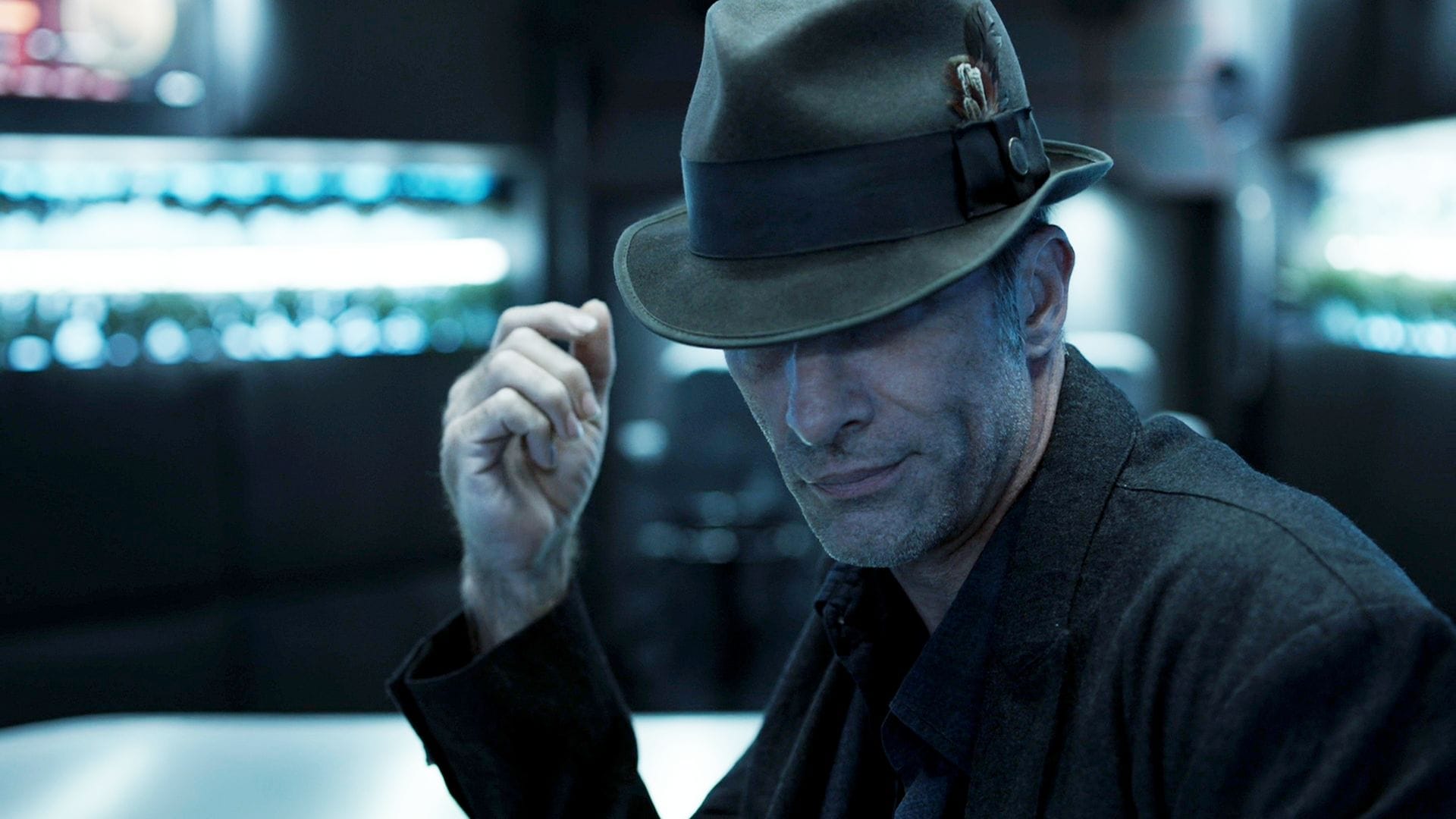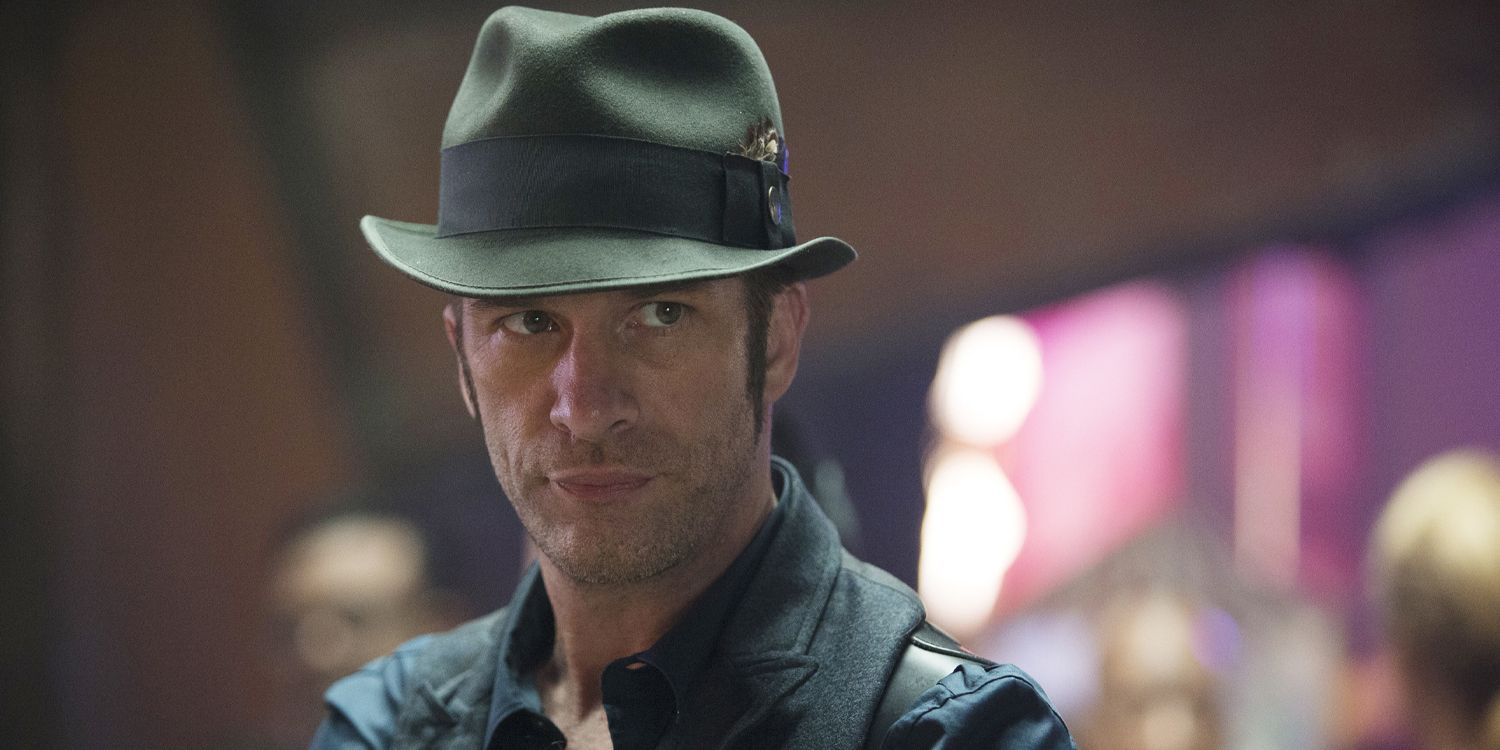Why does Thomas Jane wear that ridiculous hat in The Expanse?
All great detectives have either a cool hat, or a nice car. There are no cars in space.

The Expanse is a serious show about serious issues. Mars is full of fascists, Earth is populated by a bunch of no-hopers who would destroy the galaxy for a dollar, Belters are maniacal terrorists threatening our way of life. Capitalism dehumanises people by design. We are wholly unprepared for the effects of returning to a colonisation-fuelled society.
Detective Joe Miller wears a hat.
Sliver of context: I've been watching The Expanse over again recently, having forgotten everything beyond it being one of the best TV shows ever made. Thankfully this shorthand was correct. For your information, this piece contains a few small-to-medium spoilers for just the first season of The Expanse.
I got distracted by the hat the first time around, and here I am again thinking of Miller (played by the star of Homeless Dad, Thomas Jane) and that dang hat. What purpose does it serve? Where did it come from? Why does he keep touching it? The true answer is that The Expanse has an unwavering dedication to the concept of a tangible universe. The show's world is bound by the physical—metaphorically and literally. Objects and scenes have a feeling, a taste, a smell that positions them in the fantastical, sci-fi setting.
Think about boots. People in various spacecraft often find themselves wearing special magnetic boots, which compensate for the lack of gravity during space travel. It's less important how these mag-boots work in-universe (given the hardness of The Expanse's sci-fi, there's probably a technical manual somewhere, and an equally-lengthy Reddit post on why they're stupid), we're more interested in how they work for the audience.

Characters are shown explicitly turning on the boots to prepare for a loss of gravity, we see early close-up shots of this process. Throughout the series, we react subconsciously to the quiet metallic 'clink' of active mag-boots, reassured that these characters definitely shouldn't be floating around but we are for sure in space right now.
Physical concerns. Real people with real problems, no matter how fantastic.
Beyond the technical bits and pieces, The Expanse pays particular, constant attention to the state of human bodies. Belter physicality is particularly emphasised, with Belters profoundly altered by growing up in low-gravity and low-oxygen environments. We're quickly shown the result of life in the Belt when a pale, stretched human is captured by the Earth authorities in Season 1 and tortured with the simple realities of Earth's atmosphere. The camera lingers on his arms and shoulders as they droop painfully over two protruding pieces of the cell wall. The man feels more like a piece of meat on display than a person of value.
A similar violent disrespect for bodies is seen through the rest of the series. Shed Garvey's head is obliterated by a speeding piece of space debris, leaving nothing but a neck cavity leaking blood onto the other characters; corpses are laid out as if they had never been human in the first place, and devices are jammed through their flesh with little thought beyond the practical; characters struggle visually for breath and suffer from horrible, visible injuries that persist over multiple scenes.
Bodies in this universe are emphasised, altered, played with and destroyed in equal measure. The way that characters struggle to fight, breathe and love is given a good portion of the spotlight. It feels like an acknowledgement of the true horrors of space, the potential loss of identity and humanity; so far from anything resembling home, or anything recognisable at all, a person could simply cease to be.

So the physical becomes important as a means of holding onto any kind of identity. If you bleed, if you sweat, if you fuck and die and suffer all the way down, then you must be real.
Miller's trilby is part of that—an oddly specific and anachronistic choice of headwear for the detective, but one that speaks to his physical identity. He takes moments to adjust it because it anchors him to a physical place as himself. He uses it to hide evidence to show the audience that it's become a part of who he is and how he works. The hat's actually genius, not stupid, so shut up.
Thomas Jane's hat, like every other aggressively physical part of The Expanse, is a look at what makes good sci-fi so special. No matter how hard you speculate in your fiction, you're still talking about human beings, and their struggle to exist in whatever setting you dreamed up. Characters need to connect to their humanity, or lose it for lack of trying. This is why sci-fi and horror hold hands so often to such great effect, with the same emphasis on the physical and the organic. Humans are such tiny, frail things already, and if you put them in an enclosed, isolated place with a xenomorph or Sam Neill they will be ripped into tiny, disgusting pieces. Or their eyes will be stolen. Or something else will begin to live in their chest.
You can't tell a good story in space without confronting the fact that human beings should not actually be in space. Space is a terrifying void in which all forms of death are possible and often very likely. Every astronaut secretly knows that going into space is a huge mistake. Science fiction is often presented as a window into what amazing things the future may hold for us, but more often than not it's a warning.
Hold onto your self whatever way you can. If you're going to space, bring a hat.
